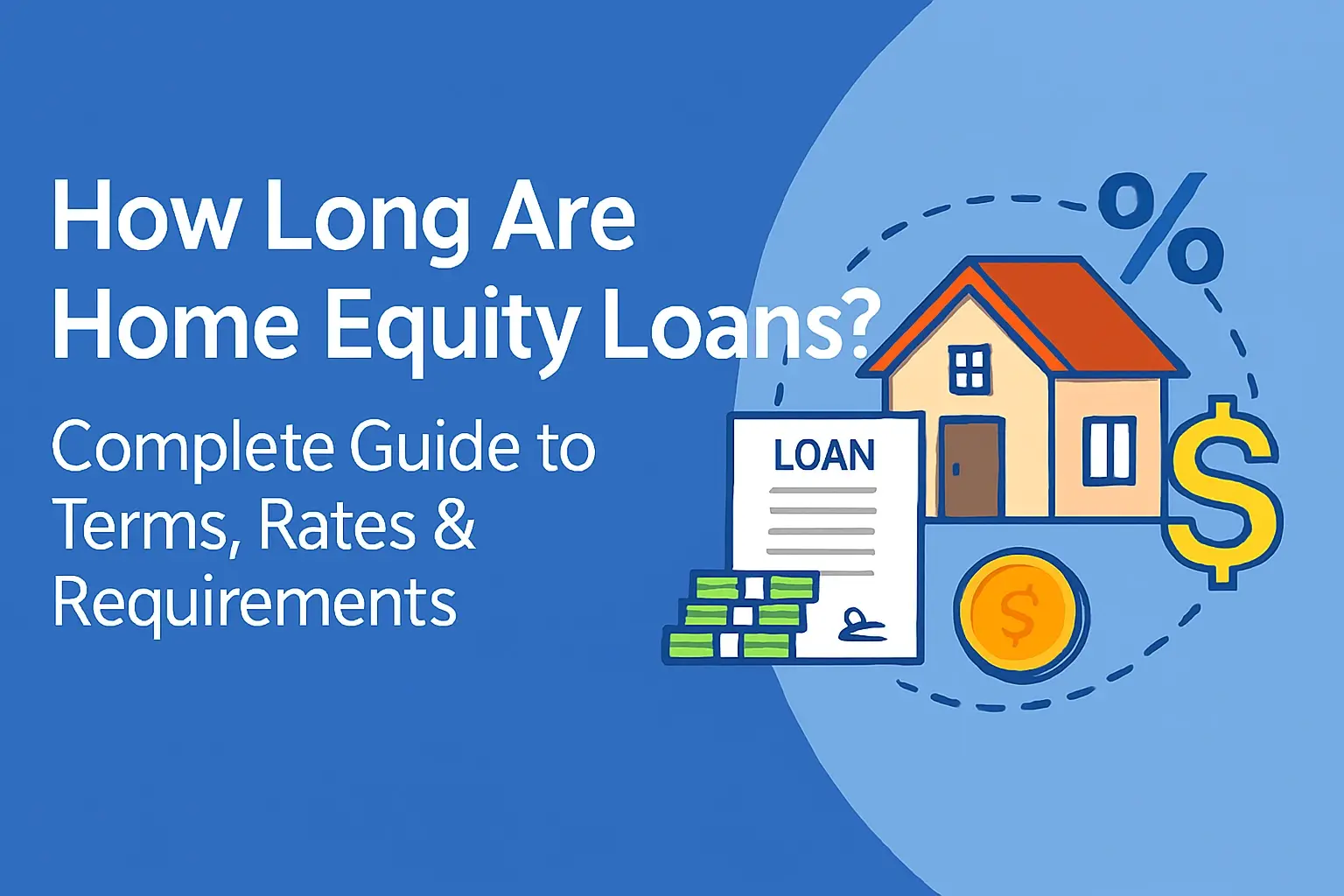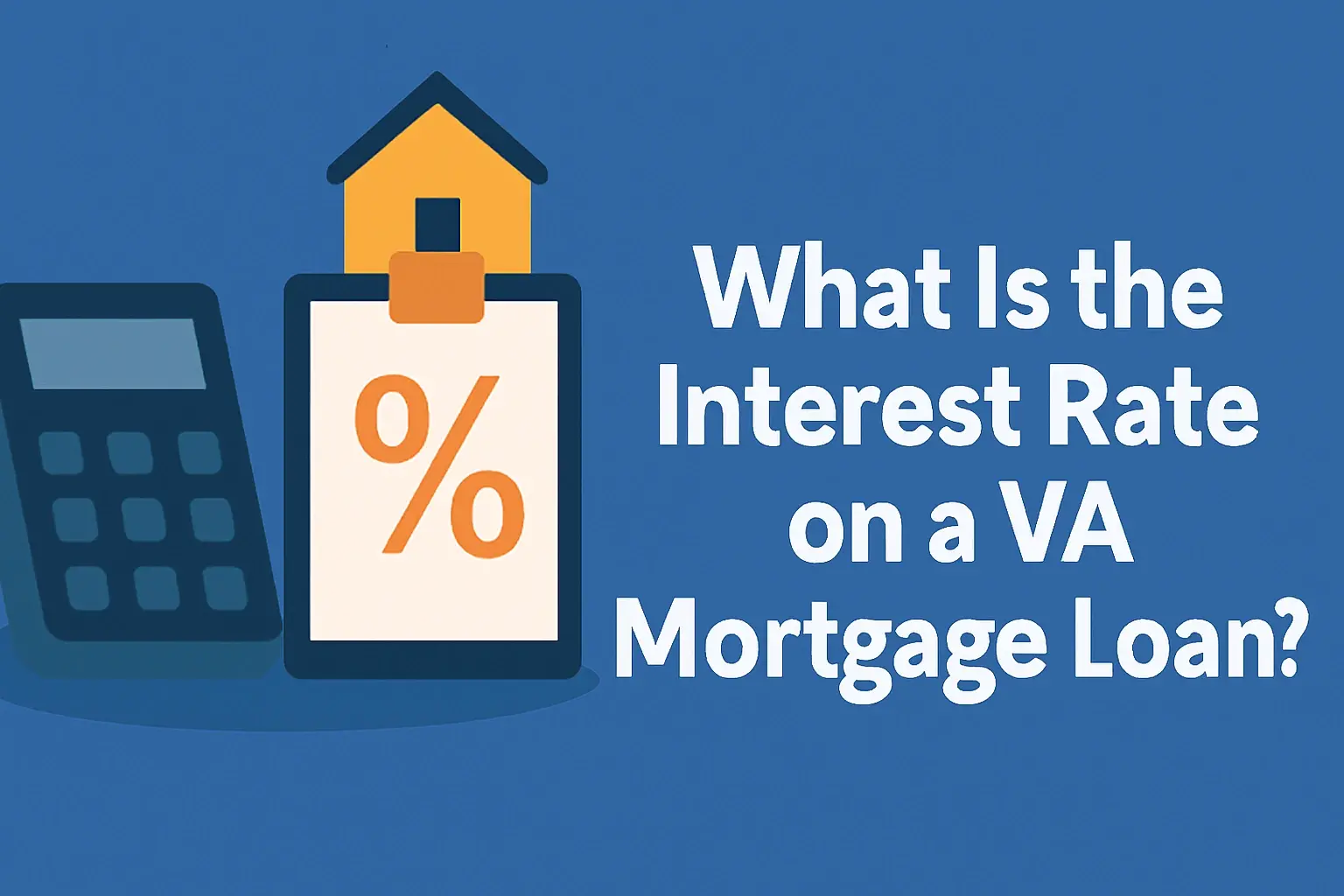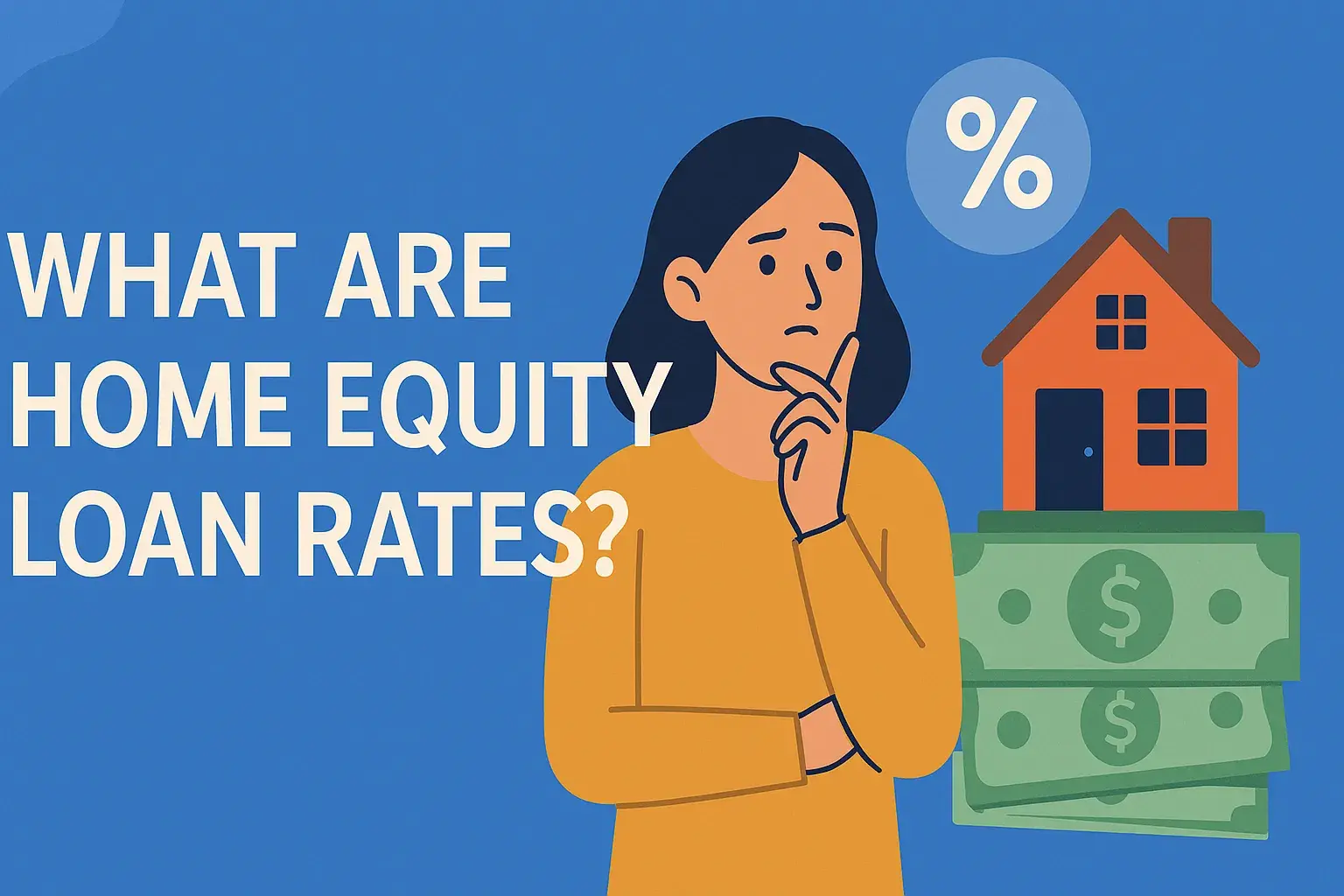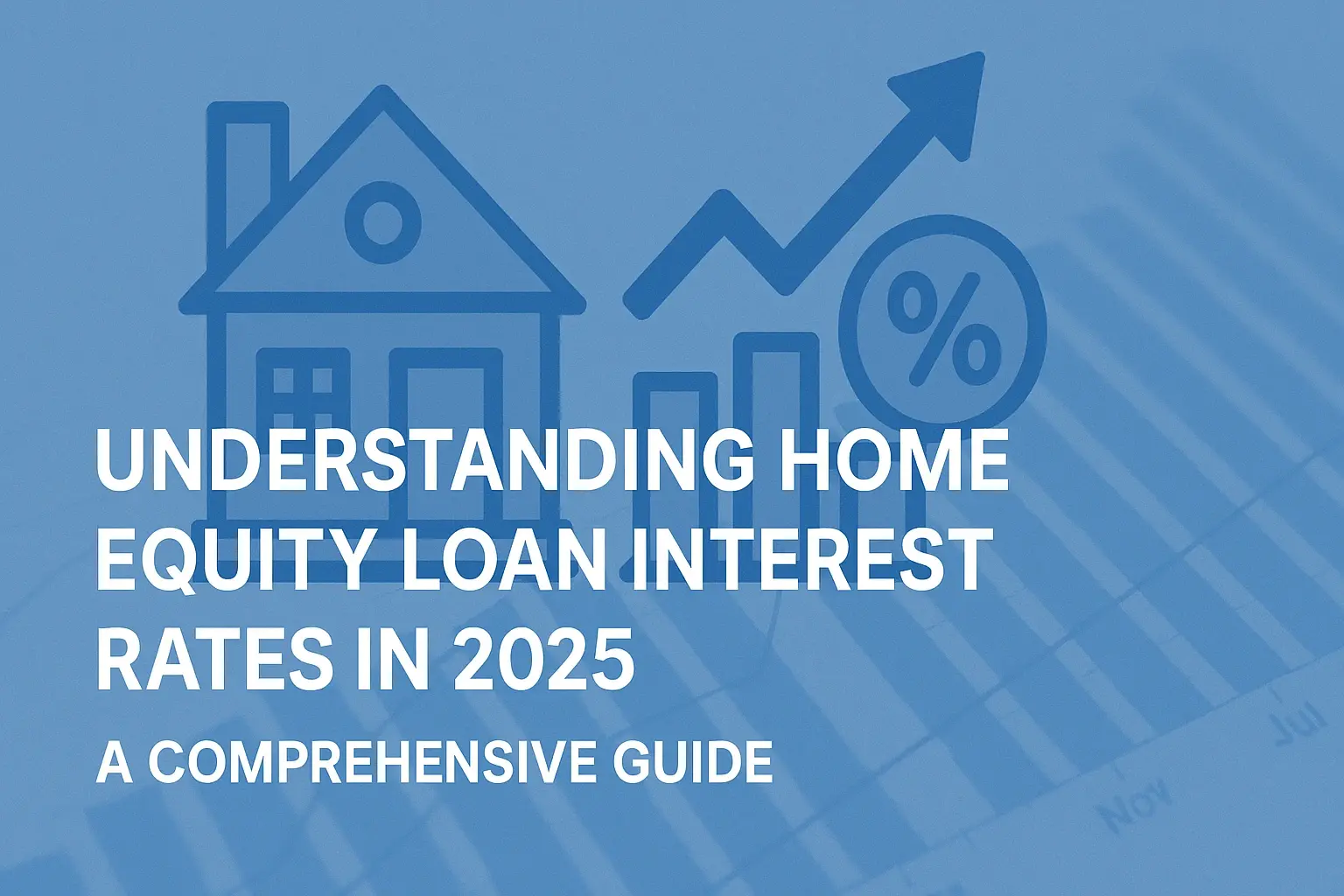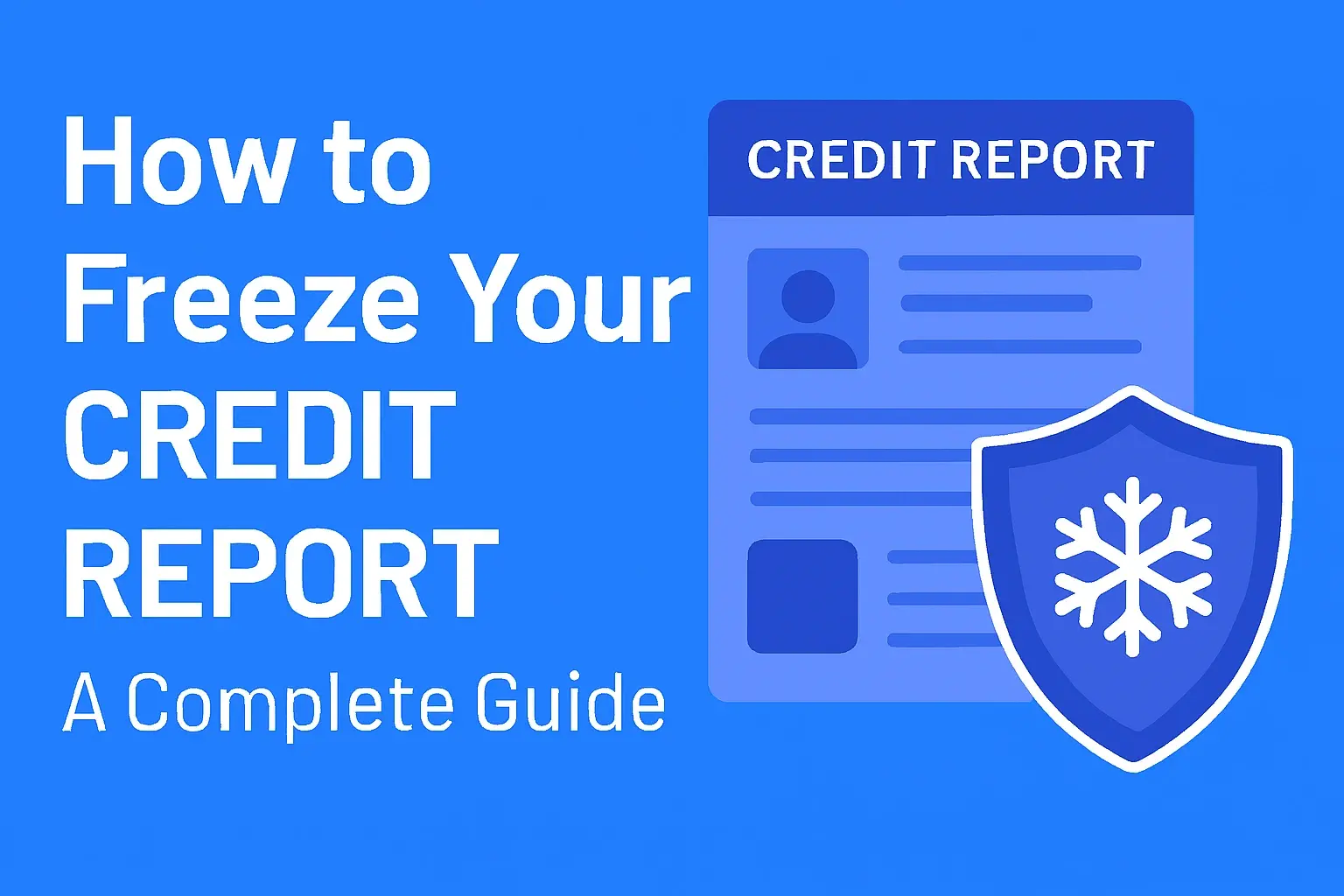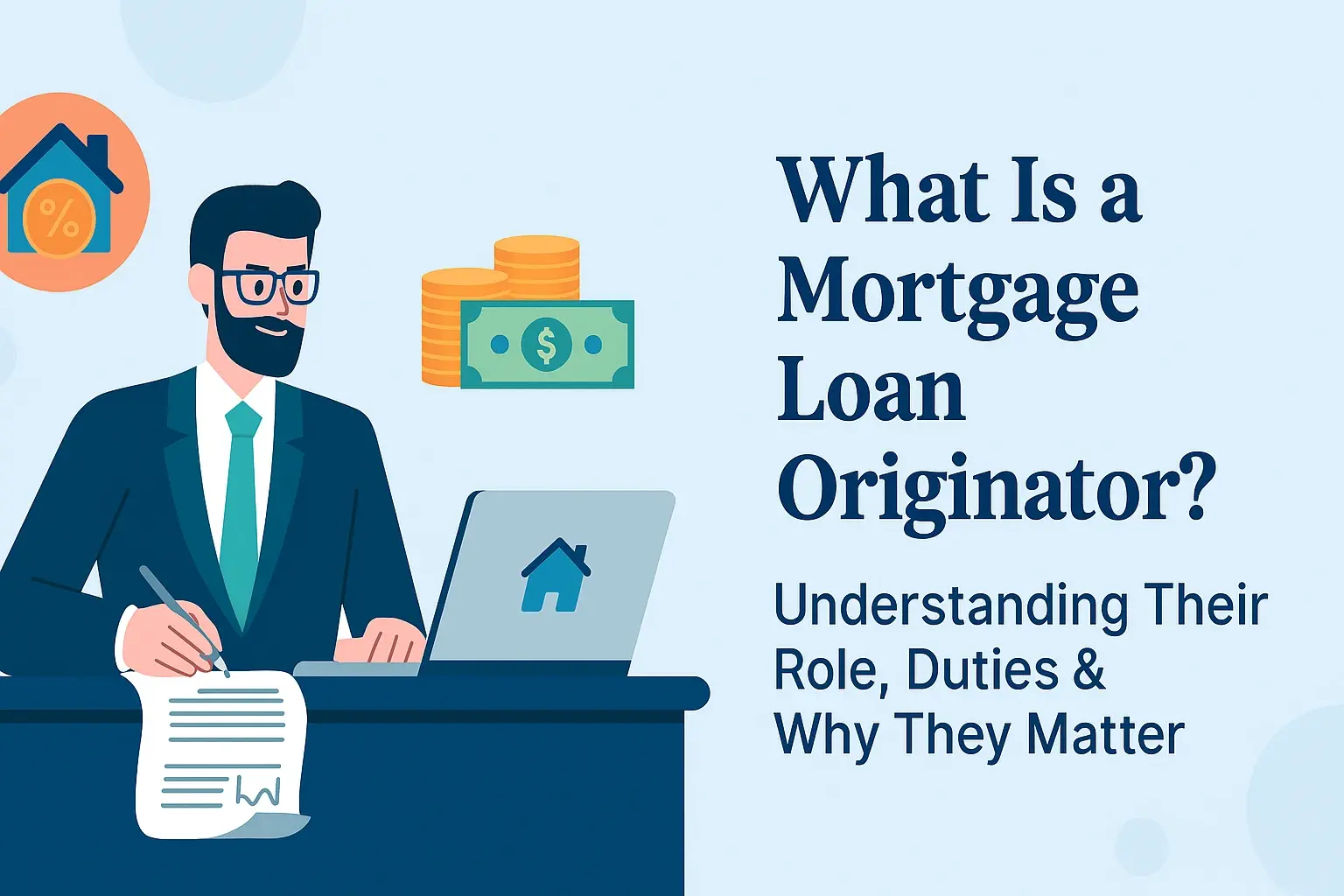-
Posted on: 22 Mar 2025

-
Navigating home equity loan options with bad credit can feel daunting, but it's not impossible. This guide explores viable pathways, from specialized lenders to alternative financing, offering practical strategies for borrowers facing credit challenges in 2025.
Understanding Home Equity and Loans
Home equity represents the portion of your home's value that you truly own. It's calculated by subtracting any outstanding mortgage balance from your home's current market value. For instance, if your home is worth $300,000 and you owe $150,000 on your mortgage, you have $150,000 in home equity. This equity can be a valuable financial asset, and lenders often see it as collateral to secure various types of loans, commonly referred to as home equity products.
The two primary types of home equity products are home equity loans and home equity lines of credit (HELOCs). While both allow you to borrow against your home's equity, they function differently. A home equity loan is a lump-sum loan with a fixed interest rate and a set repayment schedule. It's akin to a second mortgage. A home equity line of credit (HELOC), on the other hand, is a revolving credit line that you can draw from as needed during a specific period, typically with a variable interest rate. Once the draw period ends, you enter a repayment period where you pay back the principal and interest.
These products are attractive because they often offer lower interest rates than unsecured loans, such as personal loans, due to the collateral involved. The ability to tap into your home's equity can provide significant funds for various purposes, including home renovations, debt consolidation, education expenses, or unexpected emergencies. However, it's crucial to remember that your home serves as collateral, meaning failure to repay the loan could result in foreclosure.
The Hurdles of Bad Credit for Home Equity Loans
When applying for any type of loan, lenders assess your creditworthiness to determine the risk involved in lending you money. Your credit score and credit history are paramount in this evaluation. A "bad credit" score, generally considered below 630 on the FICO scale, signals to lenders a higher probability of default. This significantly complicates securing traditional home equity loan options.
Traditional lenders, such as major banks and credit unions, often have stringent credit score requirements for home equity products. They typically look for scores in the mid-600s or higher. Borrowers with scores below this threshold often face outright rejection. Even if approved, they might be offered less favorable terms, including higher interest rates, shorter repayment periods, and stricter loan-to-value (LTV) ratios. For example, a borrower with a credit score of 580 might find that most mainstream lenders won't consider their application for a home equity loan or HELOC.
The primary reason for these challenges is risk. Lenders view borrowers with a history of missed payments, defaults, bankruptcies, or high credit utilization as higher risk. This means they are more likely to experience financial difficulties that could prevent them from repaying the loan. To mitigate this perceived risk, lenders compensate by charging higher interest rates. For a borrower with bad credit, the interest rate on a home equity loan could be several percentage points higher than for someone with excellent credit, significantly increasing the overall cost of borrowing.
Furthermore, lenders might impose stricter conditions on loan-to-value (LTV) ratios. LTV is the ratio of the loan amount to the appraised value of your home. While standard LTV for home equity products might go up to 80% or even 85% for borrowers with good credit, those with bad credit might be limited to a much lower LTV, perhaps 60% or 65%. This means you can borrow less against your equity, even if you have substantial equity available. For instance, if your home is worth $300,000 and you have $150,000 in equity, and a lender imposes a 60% LTV limit, you could only borrow up to $180,000 (60% of $300,000), and you'd still need to account for your existing mortgage balance.
The application process itself can also be more arduous. Lenders may require more extensive documentation to verify your income, assets, and ability to repay. This could include detailed pay stubs, tax returns, bank statements, and a thorough explanation of any past credit issues. The overall experience can be discouraging, but understanding these hurdles is the first step toward finding viable solutions.
Key Home Equity Loan Options for Bad Credit Borrowers
While traditional avenues might be challenging, several specialized options and strategies can help bad credit borrowers access home equity loans in 2025. These often involve different types of lenders or a more flexible approach to risk assessment.
1. Lenders Specializing in Bad Credit or Non-Prime Borrowers
Some financial institutions and mortgage brokers specifically cater to borrowers with less-than-perfect credit. These lenders understand the challenges faced by individuals with lower credit scores and have developed products and underwriting processes designed to accommodate them. They may look beyond just the credit score, considering other factors like your income stability, employment history, and the amount of equity you possess.
These lenders might be mortgage companies, online lenders, or specialized credit unions. Their approval criteria are typically more lenient regarding credit scores. While they will still review your credit report, a score in the high 500s or low 600s might not be an automatic disqualifier. Instead, they might focus more on your debt-to-income ratio (DTI) and your ability to demonstrate a consistent income stream sufficient to cover the new loan payments.
Example: A borrower with a credit score of 590 and a stable job might find a specialized lender willing to offer a home equity loan, whereas a traditional bank would likely decline the application. This lender might charge a higher interest rate, perhaps in the 10-15% range, compared to the 6-8% offered to prime borrowers, but it provides access to funds when other options are unavailable.
Statistics for 2025: The non-prime mortgage market continues to evolve, with an estimated 15-20% of all home equity originations in 2025 potentially going to borrowers with credit scores below 660, a significant portion of whom might have scores in the sub-600 range. These specialized lenders play a crucial role in this segment.
2. Home Equity Loans with Co-signers
If your credit score is a significant barrier, bringing in a co-signer with a strong credit history can dramatically improve your chances of approval. A co-signer is someone who agrees to be legally responsible for the loan if you are unable to make payments. Their creditworthiness acts as a form of guarantee for the lender.
The co-signer must typically have a good to excellent credit score (usually 700 or higher), a stable income, and a low debt-to-income ratio. They also need to be comfortable with the risk involved, as their credit score will be impacted if payments are missed, and they could be held liable for the entire debt. It's essential to have open and honest conversations with any potential co-signer about the responsibilities and risks.
Example: A borrower with a 580 credit score and a steady income applies for a home equity loan. Their application is initially denied. However, when their parent, who has a credit score of 750 and a good income, agrees to co-sign, the lender re-evaluates the application and approves it, offering a more reasonable interest rate than would have been available otherwise.
3. Home Equity Loans with Lower LTV Ratios
As mentioned earlier, lenders often adjust their LTV requirements based on creditworthiness. For borrowers with bad credit, lenders may offer loans only up to a lower percentage of the home's value. While this means you can borrow less, it also reduces the lender's risk, making them more willing to approve the loan.
If you have substantial equity in your home, even a lower LTV might still provide access to the funds you need. For instance, if your home is worth $400,000 and you owe $100,000, you have $300,000 in equity. A lender offering a 60% LTV would allow you to borrow up to $240,000. Subtracting your existing mortgage, you could potentially access $140,000, which might be sufficient for your needs.
Example: A homeowner with a 600 credit score has a home valued at $350,000 with a $200,000 mortgage, leaving $150,000 in equity. A traditional lender might deny them. However, a specialized lender might offer a loan at 65% LTV, allowing them to borrow up to $227,500. After paying off the existing mortgage, they could access $27,500, which might be enough for a small renovation or debt consolidation.
4. Home Equity Loans with Higher Interest Rates and Fees
It's a reality that with bad credit, you will likely face higher costs. Lenders compensate for increased risk by charging higher Annual Percentage Rates (APRs) and potentially higher origination fees or other closing costs. While this makes the loan more expensive, it's the trade-off for accessing funds when your credit is a limiting factor.
When comparing offers, it's crucial to look beyond just the advertised interest rate. Understand all the fees associated with the loan, including origination fees, appraisal fees, title insurance, and any points charged. These can add significantly to the total cost of borrowing. A loan with a seemingly lower interest rate but high fees might end up being more expensive than a loan with a slightly higher rate but minimal fees.
Example: A borrower with a 590 credit score is offered two home equity loans. Loan A has a 12% APR with a 2% origination fee. Loan B has a 13% APR with a 0.5% origination fee. For a $50,000 loan, Loan A would cost $1,000 in origination fees plus interest, while Loan B would cost $250 in origination fees plus interest. The total cost over the life of the loan needs careful calculation.
5. Fixed-Rate Home Equity Loans vs. HELOCs for Bad Credit
For borrowers with bad credit, a fixed-rate home equity loan is often a safer bet than a HELOC. With a fixed-rate loan, your interest rate and monthly payments remain the same throughout the loan term. This predictability is invaluable when managing a budget, especially with a less-than-perfect credit history.
HELOCs typically have variable interest rates, meaning your payments can increase if market interest rates rise. This uncertainty can be risky for borrowers who may already be on tight financial footing. Additionally, the initial draw period of a HELOC might require only interest payments, leading to a false sense of affordability. Once the repayment period begins, your payments will include both principal and interest, and they could be significantly higher if the interest rate has increased.
Recommendation: If you need a specific lump sum and want predictable payments, opt for a fixed-rate home equity loan. If you need ongoing access to funds and can manage potential payment fluctuations, a HELOC might be considered, but with extreme caution and a robust emergency fund.
Feature Home Equity Loan (Bad Credit) HELOC (Bad Credit) Interest Rate Typically fixed, but higher than prime rates. Typically variable, can fluctuate significantly. Payment Structure Fixed principal and interest payments. Predictable. Interest-only payments during draw period, then P&I. Variable. Access to Funds Lump sum disbursed at closing. Revolving line of credit; draw as needed. Risk for Bad Credit Lower risk due to predictable payments. Higher risk due to variable rates and potential payment shock. Best For Specific, one-time expenses; budget certainty. Ongoing projects or fluctuating needs (use with caution). Exploring Alternative Financing Avenues
If home equity loans remain out of reach, or if you prefer not to leverage your home further, several alternative financing options exist for borrowers with bad credit. These can provide necessary funds without directly using your home as collateral, though they may come with their own set of challenges and costs.
1. Secured Personal Loans
A secured personal loan is backed by collateral, which could be a savings account, a certificate of deposit (CD), or even a vehicle. Because the loan is secured, lenders view it as less risky than an unsecured personal loan, making it more accessible for borrowers with bad credit. The collateral provides a fallback for the lender if you default.
The terms of secured personal loans vary, but they often come with lower interest rates than unsecured loans and may have more flexible repayment periods. The amount you can borrow depends on the value of the collateral you provide.
Example: A borrower with a 550 credit score needs $10,000. They have a savings account with $15,000. A credit union offers them a secured personal loan for $10,000, using their savings account as collateral. The interest rate is 9%, significantly lower than what they would get on an unsecured loan.
2. Co-signed Personal Loans
Similar to co-signed home equity loans, a co-signed personal loan involves a creditworthy individual agreeing to co-sign the loan. This strengthens your application and can help you qualify for better terms, including lower interest rates, even if you have bad credit. The co-signer's credit history is a significant factor in the lender's decision.
It's crucial for both parties to understand the implications. If the primary borrower misses payments, the co-signer is responsible, and their credit score will be negatively affected. This option is best when there's a high degree of trust and clear communication.
Example: A borrower with a 610 credit score applies for a $15,000 personal loan but is denied due to their credit history. Their sibling, with a 720 credit score, co-signs the loan. The lender approves the loan with a 12% APR, which is manageable for the borrower.
3. Bad Credit Personal Loans from Online Lenders
The rise of online lenders has expanded options for borrowers with bad credit. Many online platforms specialize in providing personal loans to individuals with lower credit scores. These lenders often use alternative data in their underwriting process, looking at factors beyond traditional credit scores, such as income, employment stability, and banking history.
While these loans can be a lifeline, they often come with very high interest rates and fees, sometimes exceeding 30% APR. It's essential to compare offers carefully and understand the full cost of borrowing. These loans are generally best suited for short-term needs where other options are unavailable.
Statistics for 2025: Online lenders are projected to facilitate over $50 billion in personal loans to subprime borrowers in 2025, highlighting their significant role in this market segment. However, average APRs for these loans can range from 20% to 40%.
4. Title Loans (Use with Extreme Caution)
A title loan allows you to borrow money using your vehicle's title as collateral. You can typically borrow a percentage of your car's value, and you retain possession of the vehicle while making payments. If you default, the lender can repossess your car.
Title loans are notorious for their extremely high interest rates and short repayment terms, often making them predatory. They should be considered an absolute last resort, only if you are certain you can repay the loan quickly and avoid losing your vehicle. The APRs can easily reach 200-300% or more.
Warning: Due to the exceptionally high costs and risk of losing your vehicle, title loans are generally not recommended. Explore all other options before considering this route.
5. Borrowing from Friends or Family
While not a formal financial product, borrowing from trusted friends or family members can be a viable option. This often involves more flexible repayment terms and potentially no interest. However, it's crucial to treat this as a formal agreement to avoid damaging relationships.
Put the loan terms in writing, including the amount, repayment schedule, and any interest (even if it's zero). This ensures clarity and mutual understanding. Be sure to only borrow what you can realistically repay to avoid putting undue strain on personal relationships.
Preparing Your Application for Success
Even with bad credit, a well-prepared application can significantly improve your chances of approval for home equity loan options or alternative financing. Lenders want to see that you are a responsible borrower, and thorough preparation demonstrates this.
1. Assess Your Credit Report and Score
Before applying anywhere, obtain copies of your credit reports from all three major bureaus (Equifax, Experian, and TransUnion) and check your credit score. Many services offer free credit scores. Carefully review your reports for any errors or inaccuracies. If you find any, dispute them immediately with the credit bureaus. Removing incorrect negative information can potentially boost your score.
Understanding your score helps you know where you stand and what types of lenders or products might be most suitable. If your score is in the low 500s, you'll likely need specialized lenders or co-signers. If it's in the high 500s or low 600s, your options might broaden slightly.
2. Gather All Necessary Documentation
Lenders will require proof of your financial stability. Be prepared to provide:
- Proof of Income: Recent pay stubs (usually the last 30 days), W-2 forms or 1099s (for the past two years), and tax returns (past two years). If self-employed, more extensive documentation may be needed.
- Proof of Employment: Contact information for your employer to verify your employment status and duration.
- Bank Statements: Typically, the last two to three months of statements for all your checking and savings accounts.
- Identification: A valid government-issued ID, such as a driver's license or passport.
- Homeownership Documents: Proof of homeownership, property tax statements, and homeowners insurance information.
- Existing Debt Information: Details on all outstanding debts, including credit cards, car loans, and student loans, including balances and monthly payments.
Having these documents organized and readily available will streamline the application process and present you as a prepared and serious applicant.
3. Improve Your Debt-to-Income Ratio (DTI)
Your DTI is a critical metric lenders use to assess your ability to manage monthly payments. It's calculated by dividing your total monthly debt payments by your gross monthly income. For example, if your total monthly debt payments (including rent/mortgage, car loans, student loans, credit card minimums, and the potential new loan payment) are $2,000, and your gross monthly income is $5,000, your DTI is 40% ($2,000 / $5,000).
Lenders prefer lower DTIs, often below 43% for mortgages and sometimes lower for home equity products. To improve your DTI:
- Pay Down Existing Debt: Focus on paying down credit card balances and other debts. Even small reductions can help.
- Increase Income: If possible, look for opportunities to increase your income, such as taking on a side hustle or seeking a raise.
- Reduce Expenses: Analyze your budget and identify areas where you can cut back on non-essential spending.
Reducing your DTI demonstrates to lenders that you have more disposable income available to handle new loan obligations.
4. Be Transparent About Your Credit History
Don't try to hide your bad credit. Be prepared to explain any negative marks on your credit report, such as past bankruptcies, foreclosures, or late payments. Lenders are often more understanding if you can provide a clear, honest explanation and demonstrate that you have taken steps to improve your financial situation since then.
For example, if you experienced a job loss that led to financial hardship, explain the situation and how you've since secured stable employment and are managing your finances responsibly. This transparency can build trust with the lender.
5. Shop Around and Compare Offers
Never accept the first offer you receive, especially with bad credit. Different lenders have different risk tolerances and pricing structures. Contact multiple lenders, including traditional banks, credit unions, online lenders, and specialized mortgage brokers. Compare interest rates, fees, LTV limits, and repayment terms carefully.
Use online comparison tools and speak directly with loan officers. Be aware that multiple hard credit inquiries in a short period can slightly lower your score, but the benefit of finding a better loan often outweighs this minor impact. Many lenders allow you to get pre-qualified with a soft credit check, which doesn't affect your score.
Managing Your Home Equity Loan Responsibly
Securing a home equity loan with bad credit is a significant achievement, but the responsibility doesn't end there. Responsible management is crucial to avoid further financial distress and to protect your home.
1. Understand Your Loan Terms Completely
Before signing any loan documents, ensure you understand every aspect of the agreement. This includes:
- Interest Rate: Is it fixed or variable? What is the introductory rate, and what is the rate after the introductory period?
- APR: This reflects the total cost of borrowing, including fees.
- Monthly Payment: Know the exact amount and when it's due.
- Loan Term: How long do you have to repay the loan?
- Fees: Understand all origination fees, appraisal fees, late fees, prepayment penalties, and any other charges.
- Collateral: Remember that your home is collateral.
If anything is unclear, ask your lender for clarification. Don't hesitate to seek advice from a financial advisor.
2. Create a Realistic Budget
Incorporate your new loan payment into your monthly budget. Ensure you have enough income to cover this payment comfortably, along with all your other essential expenses. If your budget is already tight, look for ways to reduce spending or increase income to accommodate the new obligation.
Consider building a small emergency fund to cover unexpected expenses that could otherwise jeopardize your loan payments. This fund can act as a buffer during difficult times.
3. Make Payments On Time, Every Time
This is the most critical aspect of responsible loan management. Late payments can result in hefty fees, damage your credit score further, and, in the case of a home equity loan, could eventually lead to foreclosure. Set up automatic payments from your bank account if possible, or create calendar reminders to ensure you never miss a due date.
If you anticipate a temporary difficulty in making a payment, contact your lender immediately. They may be able to offer a temporary forbearance or a modified payment plan. Proactive communication is key.
4. Avoid Further Unnecessary Debt
While you might have taken out a home equity loan to consolidate debt or for a specific purpose, avoid accumulating new high-interest debt. Resist the temptation to use credit cards for impulse purchases or to take out other loans unless absolutely necessary. The goal is to improve your financial situation, not to add more burdens.
5. Consider Refinancing When Your Credit Improves
If you manage your home equity loan responsibly and your credit score improves over time, you may become eligible for refinancing. Refinancing could allow you to secure a lower interest rate, reduce your monthly payments, or shorten your loan term. Keep track of your credit score and financial health, and explore refinancing options periodically.
Example: A borrower with a 600 credit score secured a home equity loan at 12% APR. After two years of consistent, on-time payments and improving their credit score to 680, they are able to refinance the remaining balance at 8% APR, saving them significant money over the life of the loan.
Final Thoughts and Actionable Steps
Securing home equity loan options with bad credit in 2025 presents challenges, but it is achievable through strategic planning and exploring specialized avenues. By understanding the hurdles associated with poor credit, you can better navigate the landscape of specialized lenders, co-signed loans, and alternative financing. Remember that your home equity is a valuable asset, but leveraging it requires careful consideration and a commitment to responsible repayment.
The key takeaways are to thoroughly assess your credit, gather all necessary documentation, and improve your debt-to-income ratio before applying. Be transparent with lenders about your financial history and always shop around to compare offers from various institutions. Prioritize fixed-rate home equity loans for payment predictability if possible, and if you do opt for a HELOC, proceed with extreme caution due to variable rates.
Your actionable steps should begin with obtaining your credit reports and scores. Identify potential lenders who specialize in non-prime borrowers or consider a creditworthy co-signer if feasible. Prepare a comprehensive financial package to present to lenders. Once a loan is secured, diligent management—making on-time payments, adhering to your budget, and avoiding further debt—is paramount. By taking these informed steps, you can successfully utilize home equity to meet your financial needs, even with a less-than-perfect credit history.


